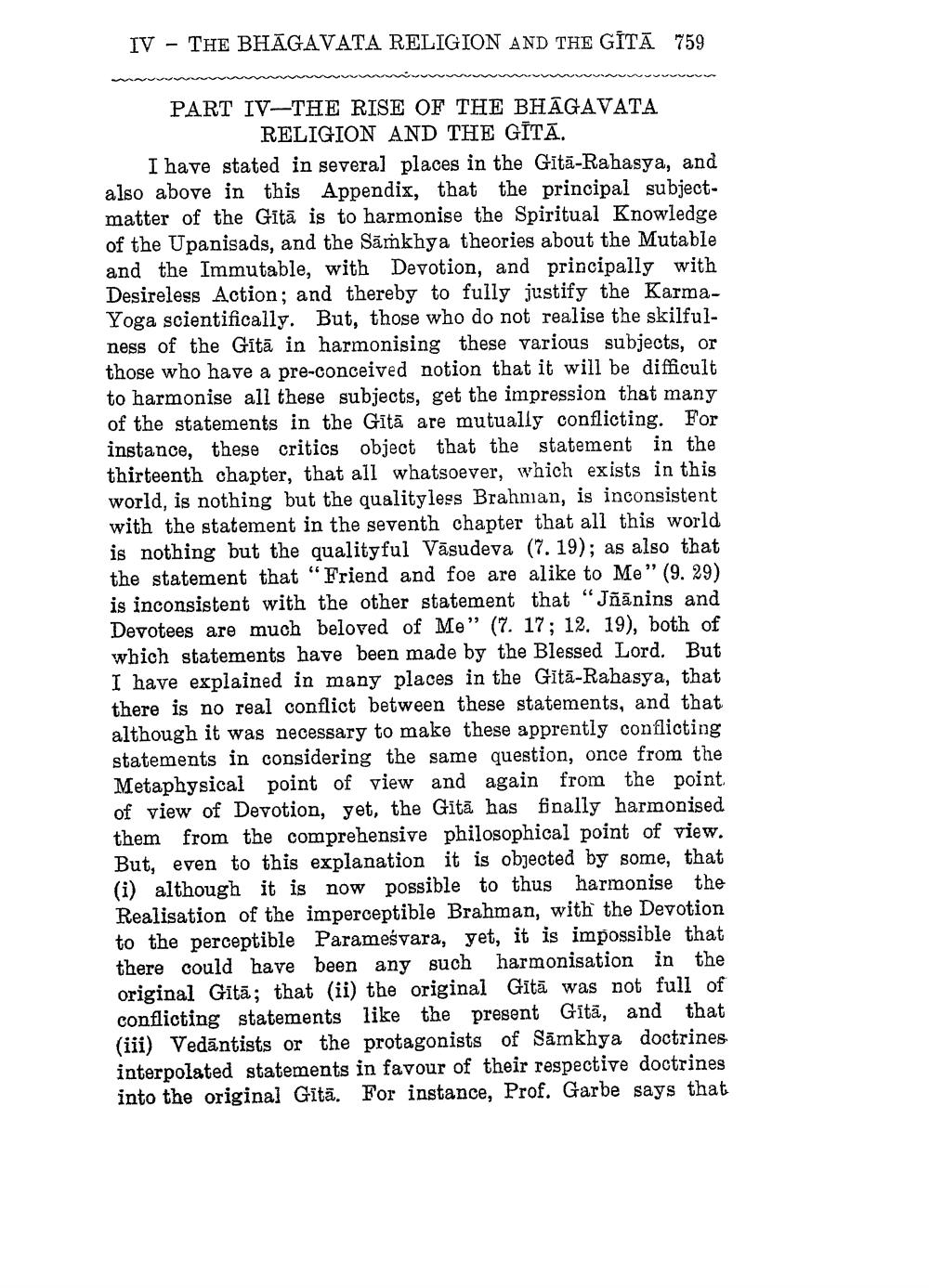________________
IV - THE BHAGAVATA RELIGION AND THE GĪTĀ 759
PART IV-THE RISE OF THE BHAGAVATA
RELIGION AND THE GĪTĀ. I have stated in several places in the Gītā-Rahasya, and also above in this Appendix, that the principal subjectmatter of the Gitā is to harmonise the Spiritual Knowledge of the Upanisads, and the Sāṁkhya theories about the Mutable and the Immutable, with Devotion, and principally with Desireless Action; and thereby to fully justify the KarmaYoga scientifically. But, those who do not realise the skilfulness of the Gita in harmonising these various subjects, or those who have a pre-conceived notion that it will be difficult to harmonise all these subjects, get the impression that many of the statements in the Gītā are mutually conflicting. For instance, these critics object that the statement in the thirteenth chapter, that all whatsoever, which exists in this world, is nothing but the quality less Brahman, is inconsistent with the statement in the seventh chapter that all this world is nothing but the qualityful Vāsudeva (7. 19); as also that the statement that "Friend and foe are alike to Me" (9. 29) is inconsistent with the other statement that “Jñānins and Devotees are much beloved of Me" (7. 17; 12. 19), both of which statements have been made by the Blessed Lord. But I have explained in many places in the Gitā-Rahasya, that there is no real conflict between these statements, and that although it was necessary to make these apprently conflicting statements in considering the same question, once from the Metaphysical point of view and again from the point of view of Devotion, yet, the Gitā has finally harmonised them from the comprehensive philosophical point of view. But, even to this explanation it is objected by some, that (i) although it is now possible to thus harmonise the Realisation of the imperceptible Brahman, with the Devotion to the perceptible Parameśvara, yet, it is impossible that there could have been any such harmonisation in the original Gitā; that (ii) the original Gītā was not full of conflicting statements like the present Gitā, and that (iii) Vedāntists or the protagonists of Sāmkhya doctrines interpolated statements in favour of their respective doctrines into the original Gītā. For instance, Prof. Garbe says that




